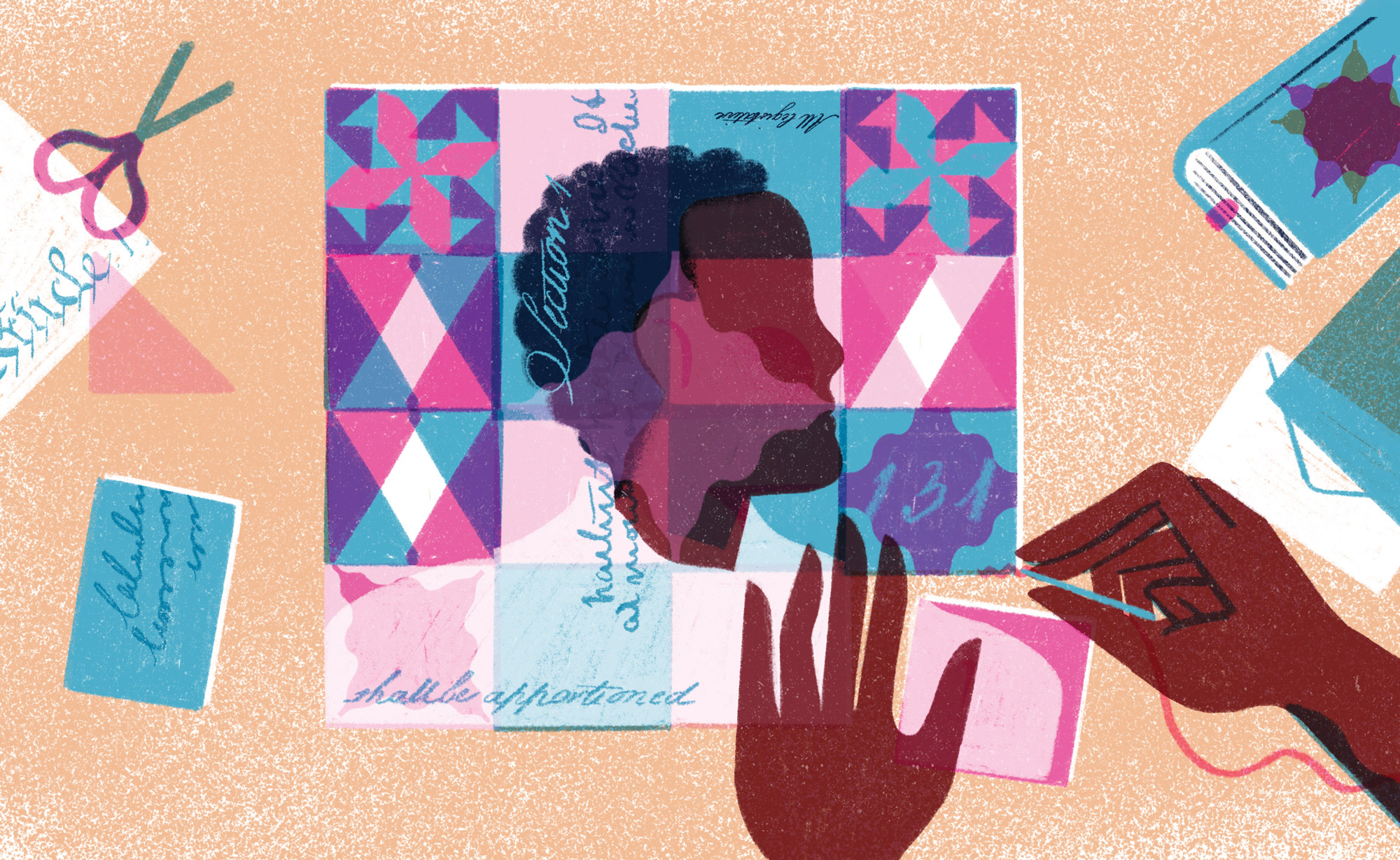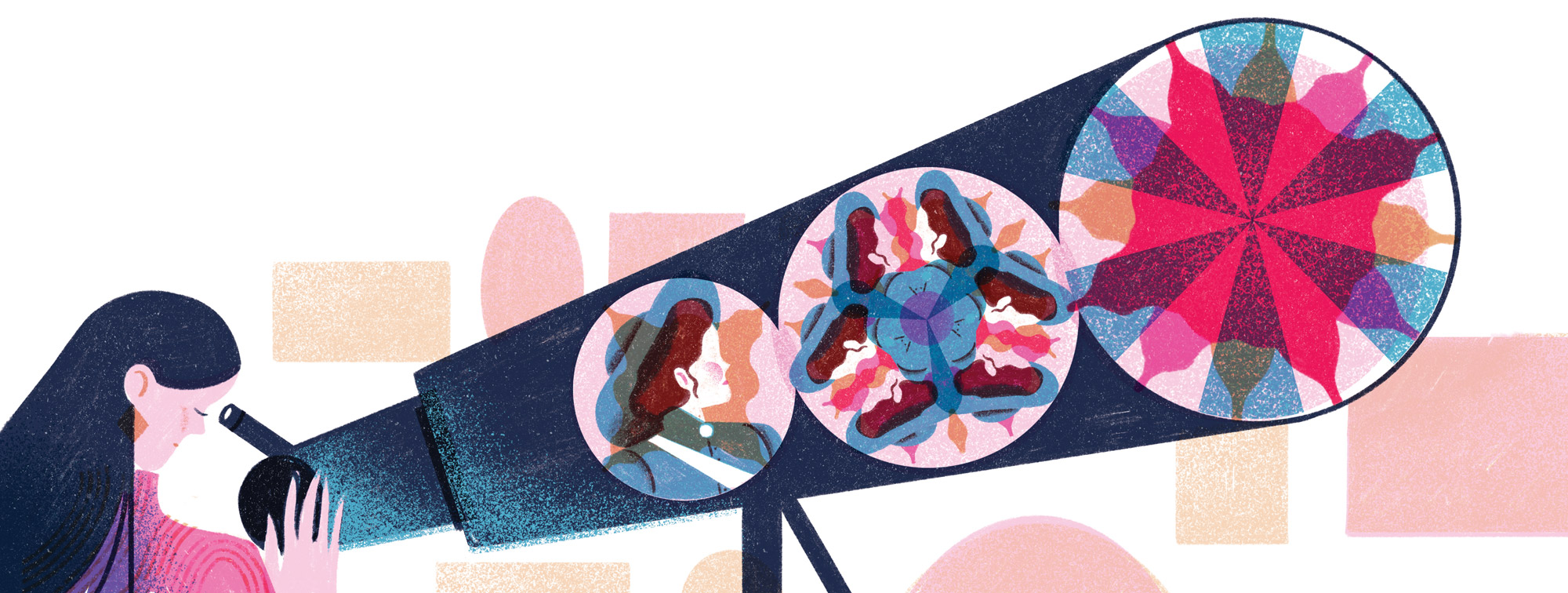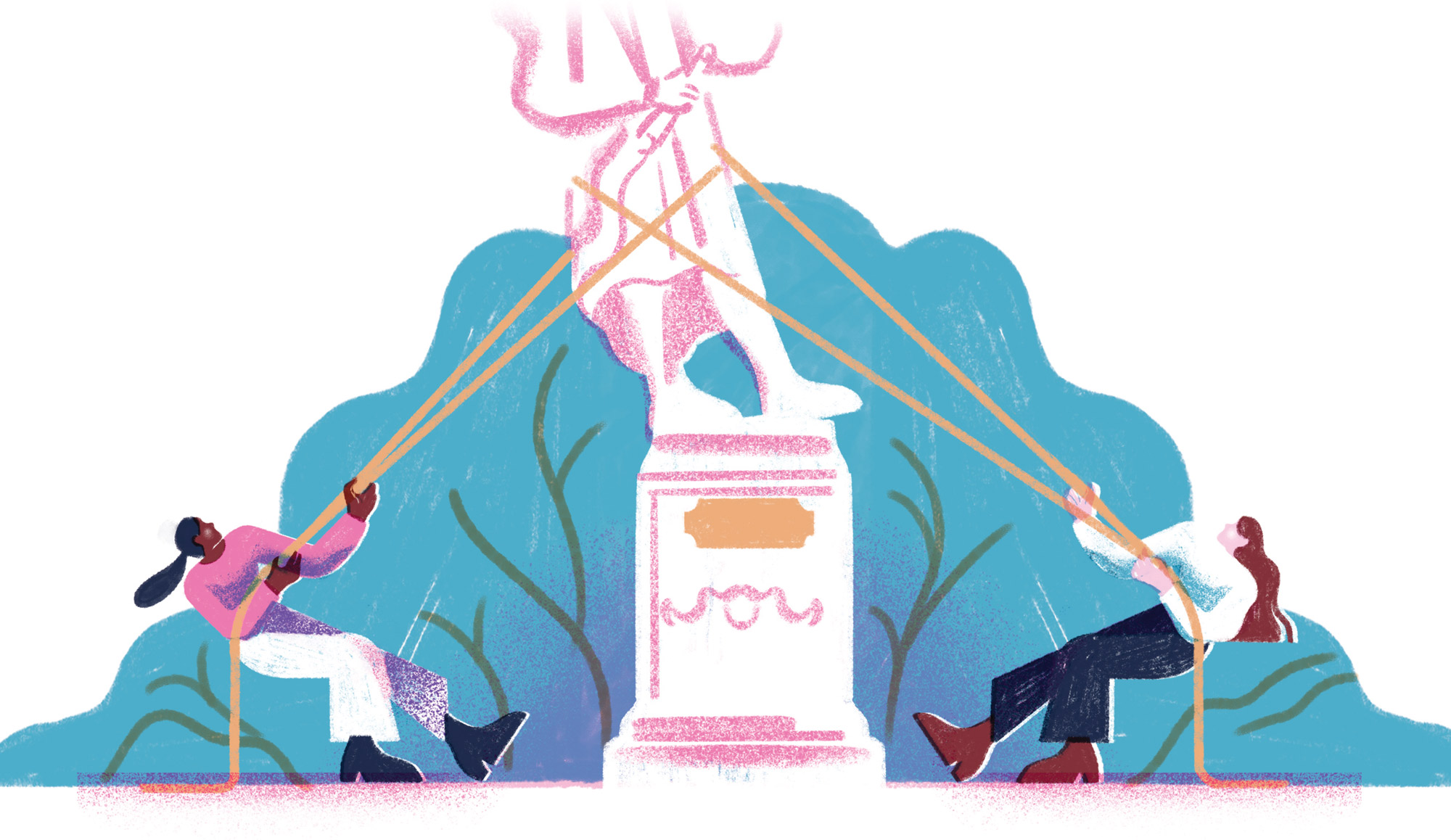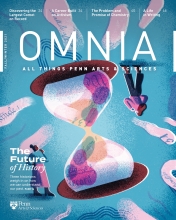The Future of History
Three historians weigh in on how we can understand our past.
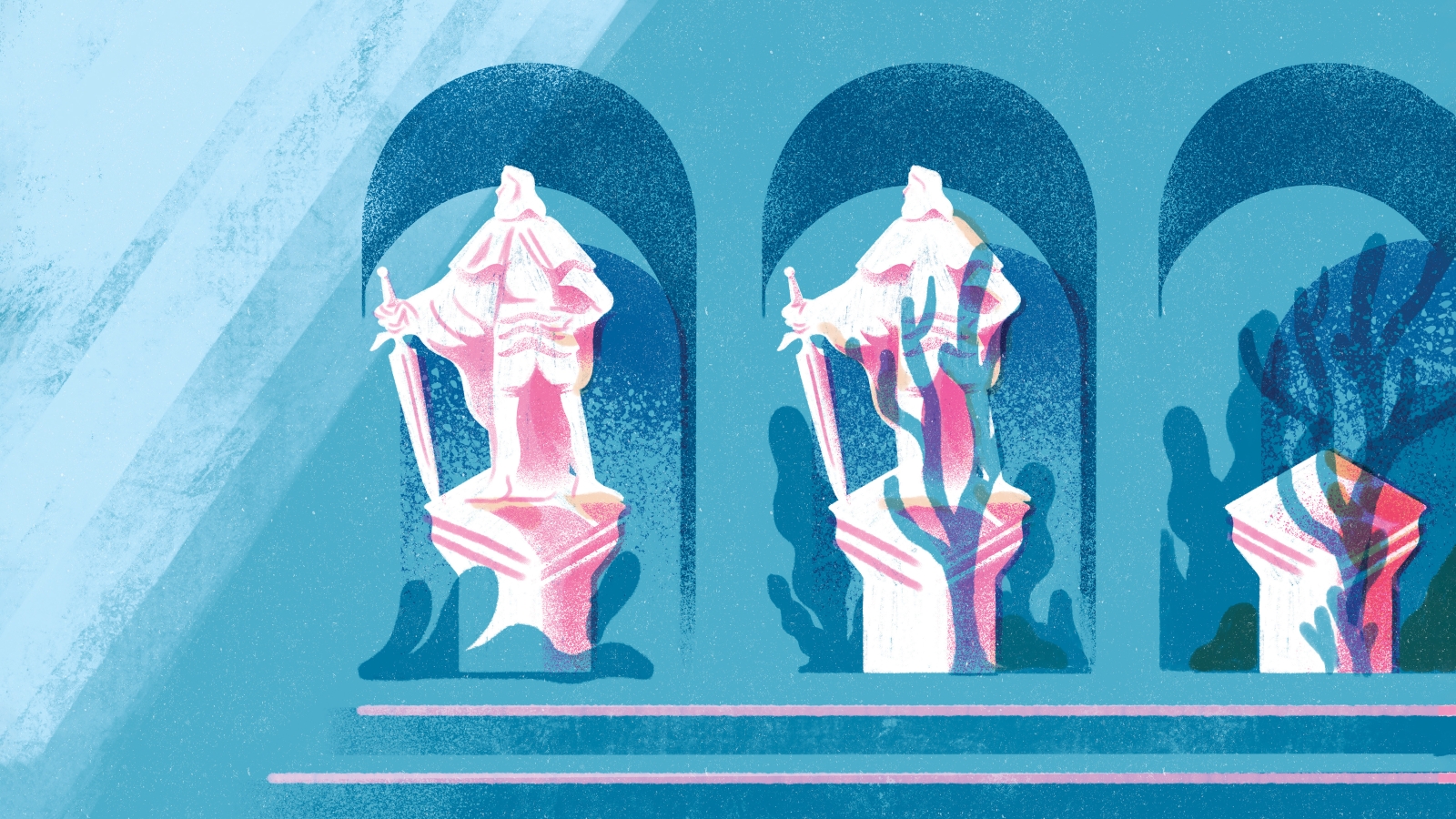
Parents, teachers, and school boards arguing over how classrooms talk about race. Monuments coming down. Passionate defenses of our history as a noble past clashing with views that see that same history as the roots of today’s injustice.
In the United States and around the world, we’re debating what our history is, what it means, and how to share it. “We have to somehow acknowledge that it can take hundreds of years to discover the meaning of something, just as if an event happens in our own life, it can take us years for us to process that event,” says David Young Kim, an associate professor of history of art. “I just love that quote from William Faulkner when he says, ‘The past is never dead. It’s not even past.’”
How does history affect our lives? How can we make it come alive? What does it mean to rewrite history? Three historians share their thoughts.

Looking Back
Reexamining our history through the lens of the present is not new, says Sophia Rosenfeld, Walter H. Annenberg Professor of History.

Sophia Rosenfeld, Walter H. Annenberg Professor of History
Winky Lewis
“I had excellent teachers in high school and college who made it clear that history was a good way of thinking about the past, but also a good way of thinking about the present,” she says. “It gave you a perspective on where you’re situated in the world and what other possibilities are out there.”
More than that, she says, history has always been written in some way to serve the present, whether it’s as entertainment, moral didacticism, or political persuasion. “We’re not finished writing it not just because the past keeps getting longer,” she explains. “It’s also because the present keeps changing. We ask new questions about the past that are often related to what’s happening in the world today.”
Rosenfeld studies the underlying assumptions that have grounded democracy since the 1650s. In her most recent book, Democracy and Truth: A Short History, she took what she’d learned about the connections between truth and democracy historically to evaluate their bearing on modern-day politics. A previous book, Common Sense: A Political History, won the Mark Lynton History Prize and the Society for the History of the Early American Republic Book Prize and has been translated into French, Chinese, and Korean.
Looking back at the past through our present perspective doesn’t mean drawing a straight line between the two. Heather Andrea Williams, Geraldine R. Segal Professor in American Social Thought, finds that many students—and adults—think they can directly connect something that happened in the past to something now. “In class, when we’re talking religion, somebody will start to formulate some arguments about religion or Christianity, and I’m saying slow down, slow down,” she says. “We’re going to spend a week talking about that and reading ‘till we work this out, and then you may still form the same conclusion, but at least you’ve thought about it.”
I think studying history is a little bit like traveling. You can’t really see your own culture and your own situation in the world until you’ve seen other possibilities.
Williams is the author of Self-Taught: African American Education in Slavery and Freedom; Help Me to Find My People: The African American Search for Family Lost in Slavery; and American Slavery: A Very Short Introduction. Her goal is to get, and give, “a feel of what things were like, what people were like, where they’re standing. I want my students to dig in and be fascinated by the study of history. And if by chance that helps them to understand something that happens later on, great.”
Visiting the Past
A professor of Africana studies and the Graduate and Undergraduate Chair of that department, Williams often takes her students to visit plantations (this semester they’re going virtually). “You can see how the white people’s house is elevated. It’s on this hill. You see the cabins where the enslaved people lived. And you can see that up at the big house, they can look down to where the enslaved people were. You see the distance between the cabins and the house so that you know that there may have been moments of privacy, of secrecy. But the overseers are close by. So, we’re layering that onto what we’re reading.”

Heather Andrea Williams, Geraldine R. Segal Professor in American Social Thought
Clay Williams
Williams knows that seeing matters. She connects Mamie Till, who made the decision to leave open the coffin of her 14-year-old son Emmett after he was lynched, with George Floyd. “Why does it take something so awful? Why do we have to see it with our own eyes for it to make such a difference?” she asks. “What about when we are able to erase the image from our minds?”
To think historically, Rosenfeld says, people need to move out of their natural understanding of the present and enter other worlds. “I think studying history is a little bit like traveling,” she says. “You can’t really see your own culture and your own situation in the world until you’ve seen other possibilities. What do other families look like? What do people eat? What counts as danger? All of those things look different when you’re traveling in space or time, and afford you the opportunity to look again at the things we often take for granted.”
On these trips into the past, we’ll see people behaving in ways that are repugnant to us: enslaving other humans or fighting to drive indigenous people from their land. Some of today’s debates center around how we should judge figures like Thomas Jefferson, a founding father who enslaved people.
“I think one of the least interesting conversations that we could have is about who was a good person and who was a bad person in today’s terms, or even in the terms of the past,” Rosenfeld says. Instead, she believes we are better off approaching forms of injustice and inequality in the past by trying to understand the moral, ethical, political, and other tradeoffs that people made in different times in response to different circumstances and beliefs. What drove them to create forms of oppression and forms of liberation, to accept or try to change the status quo?
Their individual points of view act like a light that refracts the meaning and the emotion that these works of art provoke.
Rosenfeld reminds us that the future is coming for us, too. “We will be judged and found wanting in all kinds of ways,” she says. “I would hope that people in the future look back and certainly condemn injustice wherever they see it in our own world, but also try to understand the contradictions that people live with in different moments and places and times. Otherwise history is considerably less interesting and fruitful.”
Williams turned to history trying to find that understanding. She was a lawyer before she came to academia, but teaching a seminar on race and racism in American history to middle- and high-school students re-ignited questions she’d had since she came to the United States from Jamaica when she was 11: “Where did this thing come from? Why is it that some people think that they’re better than me based on our skin color? It was baffling to me.”
Williams’ research focuses on Black people, specifically African Americans, and the white people who “put in place the world that really conscribed the movements, the possibilities for those Black people. To me, you’ve got to know about both of those. But it can be very hard to find material on African Americans, especially in the earlier periods, whereas it’s much easier to find on, say, elite white men or elite white women. I have to be very careful about not letting the white men take all my attention.”
Codebreaking
Historians often must get over an early hurdle of just understanding the sources. It can mean learning a foreign language but also earlier forms of a language, like Medieval English. There will be different expressions, or words that have different meanings—for a long time, “boy” could refer to a Black man of any age. “You have to break the code,” says Heather Andrea Williams, Geraldine R. Segal Professor in American Social Thought.
Today’s students face a new barrier: Many of them have not learned cursive writing. “It’s like me looking at Greek,” Williams says. “They don’t know what to do with it, and they get frustrated. But I insist because if you can’t read this or if you just push it aside because it’s hard to read, that means all these stories never get told.”
For David Young Kim, Associate Professor of History of Art, the barrier is even more basic: How do we use language to describe or offer an account of something which will inevitably escape language?
“I think, because English is my second language, I’ve always been very interested in how art history is perhaps the most challenging linguistic discipline because the very subject matter is nonverbal,” he says. He works with international students using art history as an instrument through which they can explore different dimensions of English—“giving students lexica, words, ways of speaking about works of art, because it’s like discovering a different part of the English language that is somehow mysterious or not often explored, and even native English speakers may not know.”
Finding the material takes persistence and imagination. Williams is a quilter, and compares her search through sources like newspaper archives and legal documents to how she puts small pieces of fabric together. She doesn’t often find journals or letters by Black people, many of whom were legally forbidden to become literate. But she finds letters about them and court documents and later interviews that report their words.
“To do this research means to really put in the time and the effort,” she says, “and when you can’t find exactly what you’re looking for, you find something and you sit with that and you turn it upside down and you turn it sideways and you say, ‘What can I do with this?’” She adds that digital access to newspapers has been “fantastic” because she can search terms and then names once she finds them.
Kim’s objects of study—art from the Italian Renaissance—can themselves be sources, but must be approached with care. He’s interested in the language of art and in how images complicate the historical sources we have. “I think it’s dangerous to use works of art as illustrations of history,” he says. “They can actually create a meaning that can be in opposition to what we know.”
Because these artworks continue to exist in our own time, says Kim, we can experience them in a historical way, according to the interlocutors of the 15th and 16th centuries, as well as their relevance for us today. He’s often asked if there’s anything new to say about his specialty. “We often have a perspective just like someone looking through a telescope with a different magnifying lens. We have a different perspective than what people in the 16th century had, because things that were obvious and familiar to them may be strange and mysterious and fascinating for us,” he says. “I tell my students that there’s always something to be said because their individual points of view act like a light that refracts the meaning and the emotion that these works of art provoke.”
Like all historians, Kim must set the contextual stage for his subject. Today’s college students, from a range of cultural and religious backgrounds, don’t necessarily know the Bible and Greco-Roman mythology that influenced Renaissance art. “It forces you as a professor to explain certain assumptions about Western and Renaissance culture that we often take for granted,” he says. “Why is the Virgin dressed in this particular color? Or why was this painting round?”
“It’s almost as though art history is about learning how to speak a variety of historical languages,” continues Kim. “I think that’s what I find very interesting. You’re speaking the language of the past. And sometimes, in the classroom, you’re speaking the language of the present, hoping to teach students how to think according to terms of the past.”
Refocusing the Lens on the Past
Beginning in the second half of the 20th century, as a result of developments like the labor and women’s movements, historians turned their attention to the stories of ordinary people, “whether they were peasants or early union organizers, which the dominant narrative had submerged, if not erased,” says Rosenfeld.
Right now, environmental history is big, as is a focus on race. “I’m very interested in how the present can reveal or unearth things about the past,” says Kim. “Current concerns about gender and race and identity allow us to see those issues that were kept in the backyard.”
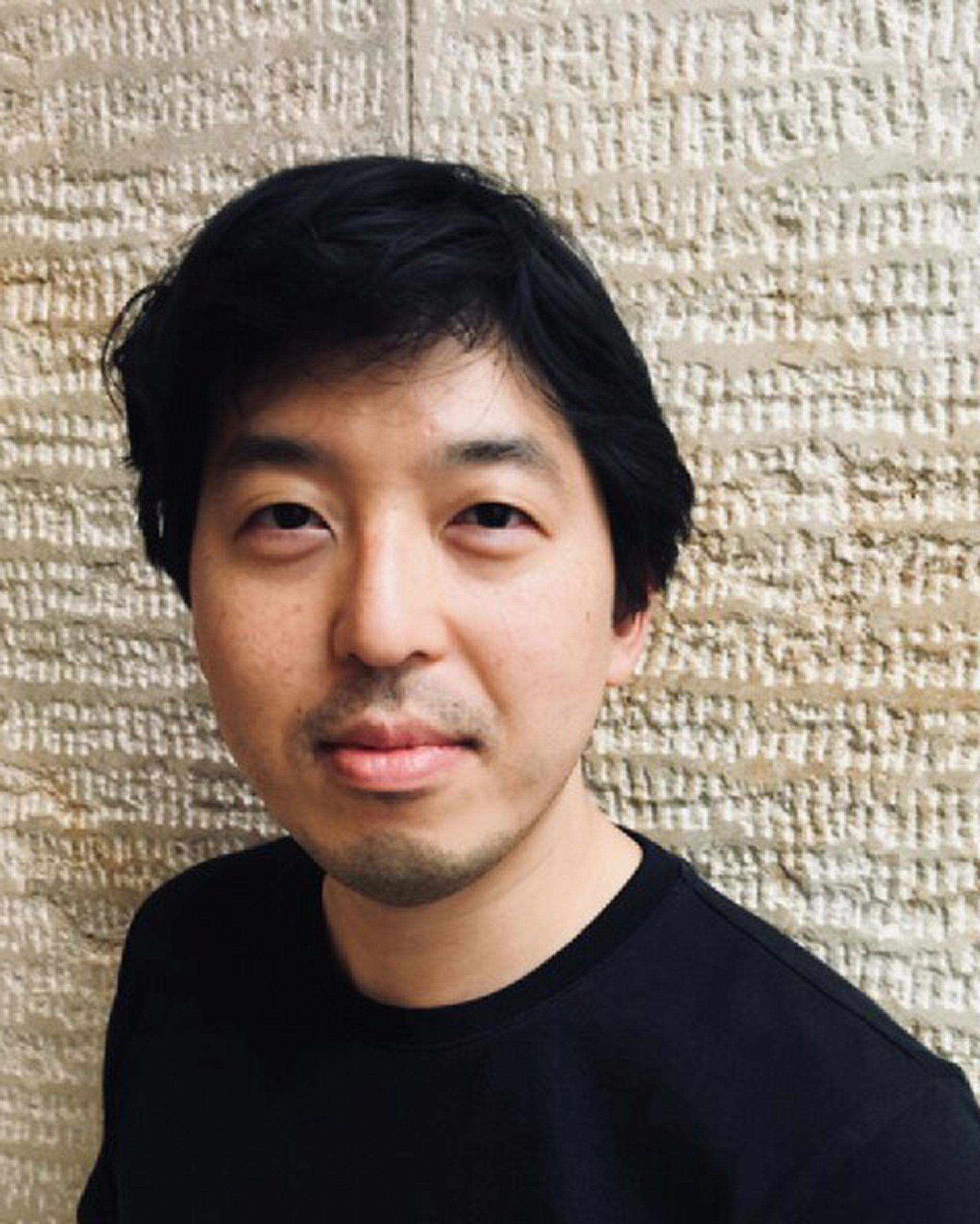
David Young Kim, Associate Professor of History of Art
Courtesy of David Young Kim
Kim’s book, The Traveling Artist in the Italian Renaissance: Geography, Mobility, and Style, explores 16th-century discourse concerning artists’ travels and the impact of that travel on artistic process, as well as viewing those journeys in relation to Renaissance ideas concerning geography, the environment, the act of creation, and selfhood. One of his current projects, Lives Found in Translation: Giorgio Vasari, Global Art History, and Cultural Authenticity, looks at translations of Vasari’s s Lives of the Most Excellent Painters, Sculptors, and Architects, which was written in the mid-1500s. He’s focusing on a translation done into Korean by Lee Keun Bai, a Korean biochemist, in 1986.
“It’s an interesting historical circumstance because the translator was a colonial subject of the Japanese empire. But that very colonial education enabled him to be acquainted with European culture and works of art,” says Kim. “It’s a very complex and delicate subject, and I’m trying to do it justice, especially in the moment in which we’re living.”
To Kim, who was born in the United States to Northern Korean immigrants who then moved to Brazil, the topic also touches on questions of “subterranean expectations” of who should do what. “I think that there’s all this discourse about global art history and transcultural exchange, but we don’t really take the time to stop and think, who are the practitioners in our field, and whom do we expect to be a certain historian of a particular discipline?”
The new angles also fill in gaps. Williams sees students eager to connect slavery to the present try to jump over a century and a half. “Slavery lasted from the 1600s to 1865. It ended 156 years ago, but what’s happened since then? I really push my students to be more nuanced and to think about what else comes in there and what’s changed. And don’t talk about ‘for the better’ or ‘for the worse,’ let’s just talk about what’s changed. How Black families are structured in America, rules about welfare, rules around all kinds of things have changed over time. The delusion of white supremacy changes to meet the needs that people see in that moment.”
We can also turn to history to see if we’re replaying an era or breaking with the past—looking back at the 1918 influenza pandemic to compare it to COVID-19, for example, or for political conflicts similar to today. “At the moment, I feel strongly that knowing more about the past can help us assess the present,” Rosenfeld says. “It offers tools for analyzing why we have the norms we do, but also sometimes reveals interesting paths not taken but worth re-exploring now.
“History is being rewritten continually. That doesn’t mean that the facts aren’t facts, though sometimes new facts are discovered,” adds Rosenfeld. “But maybe more importantly, we ask new questions and the new questions drive us to look at different kinds of material and sources, which in turn lead to new conclusions.”
The Past in the Present
To Kim, art lives outside history in some ways. “I don’t think that art necessarily has a history, like an organism that is born, lives, and dies,” he says. “We exist in the same space as it. So art history for me is using language to refine how we talk about works of art.”
He believes that we shouldn’t necessarily think of fields of study as immediately relevant or transparently consumable. “Sometimes studying something which is esoteric and strange can open up different ways of thinking that may not necessarily be immediately obvious. And I think it’s now, more than any time, we need to understand our present in new ways.”
The American Historical Association, where Rosenfeld just ended a term as a vice president, is more involved in contemporary politics than in the past, she says, “simply because historical controversies have become political controversies, and because the question of the keeping versus destruction of records has become very important in political life. Our cultural wars have intersected with questions about the teaching of history and the researching and writing of history that can’t be avoided.”
You find some little things, some little questions, something that makes you curious and you go off. Don’t begin with an argument.
The number of students who take classes or major in history has been falling in the United States, as students choose more obviously professional paths, but Rosenfeld isn’t worried that this means history itself is obsolete. “It’s a very exciting time to be studying history and to be thinking about history,” she says. “I think our students are extremely invested in what they’re reading and writing about and excited about what they’re uncovering, because it seems meaningful. It’s a field where they are, ideally, gaining tools to begin reorienting big conversations about the world we live in.”
Describing one of her students, Williams says, “She was an amazing student who was just curious and loved history and found something that really was just covered in a paragraph and decided to do her capstone paper on that topic and to explore that topic. And that’s what you do as a scholar. You find some little things, some little questions, something that makes you curious and you go off. Don’t begin with an argument, don’t begin with what you think you already know and what your position already is, but what are you curious about?”
